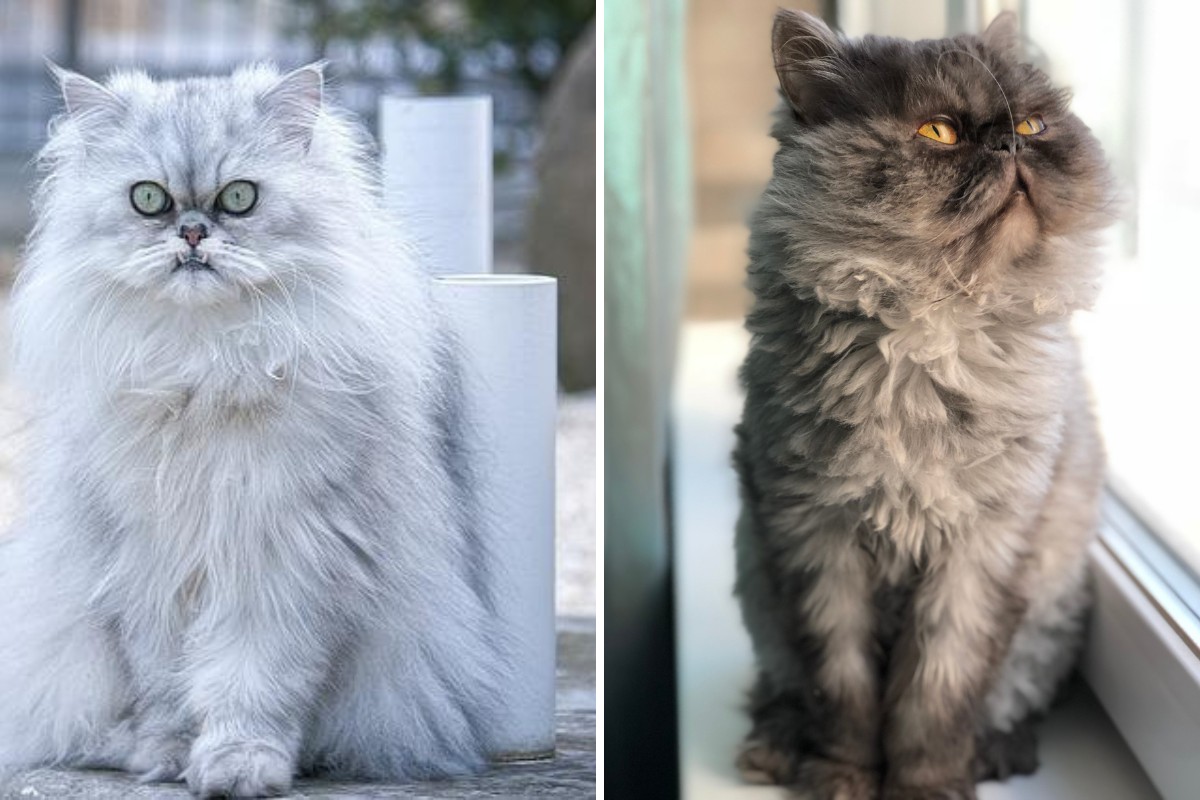 2 Nov
2 Nov8 Must Know Facts About Persian Cats
If you’re considering bringing one of these serene creatures into your life or just have a soft spot for their gentle charm, it’s essential to arm yourself with knowledge.
Persian cats aren’t just a pretty face; they come with a rich history, specific needs, and an endearing personality that might just make them the perfect companion for you.
In this post, we’re going to share eight must-know facts about Persian cats. These points will cover a variety of topics, from their storied beginnings to the nitty-gritty of their daily care.
So, whether you’re a seasoned cat parent or new to the world of these aristocratic animals, there’s something here for everyone. Let’s get started on this journey to understanding the delightful complexities of Persian cats.
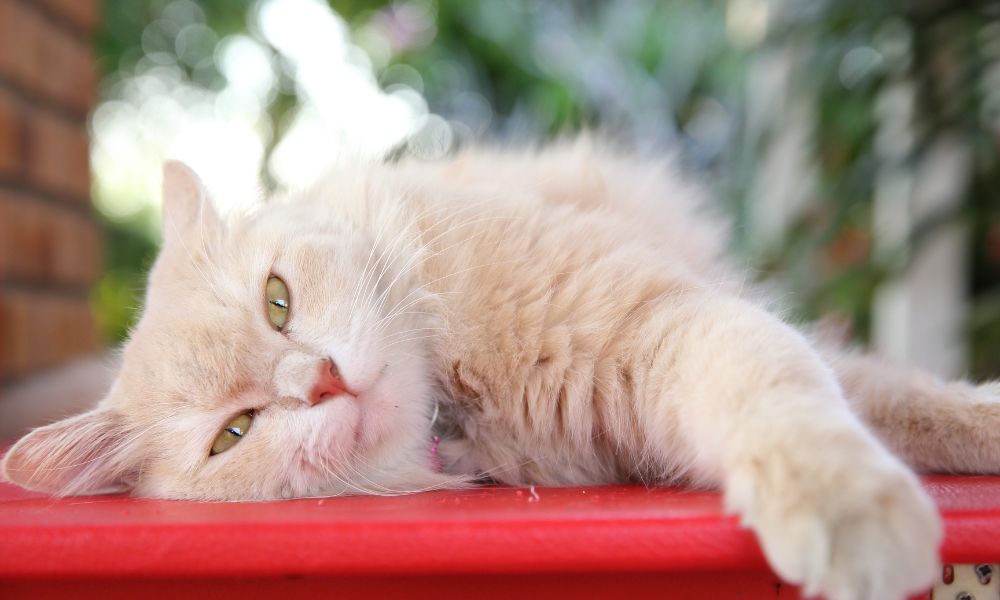
Fact #1. The Origin of Persian Cats
The story of Persian cats begins in the cradle of civilization: the high plateaus of Iran, formerly known as Persia, where their long, luxurious coats were likely an evolutionary response to the chilly mountainous climate.
While the exact history of the Persian cat is somewhat shrouded in mystery, it’s generally agreed that these elegant animals were first introduced to Europe in the 1600s.
They arrived in Italy and France courtesy of Pietro della Valle and Nicholas-Claude Fabri de Peiresc, respectively—travelers who were captivated by these silky-furred creatures in the Persian markets and decided they would be a hit back home.
The noble look and dignified demeanor of the Persian cat captivated the European elite. It wasn’t long before they became a fixture in aristocratic circles, turning the heads of nobility with their regal bearing and exotic origins.
As the Persian breed took root in Europe, its evolution accelerated. Breeders began to select for traits that would define the “modern” Persian: a round head, short face, snub nose, chubby cheeks, and a robust body draped in an opulent coat. The Victorian era saw a particular surge in their popularity, and they became the darlings of cat shows, with their breed standards being penned during this time.
Throughout the 19th and 20th centuries, as the Persian breed made its way across Europe and eventually to America, its appearance continued to refine. American breeders leaned towards even more pronounced features, resulting in the extremely brachycephalic (flat-faced) Persians that are still favored by some today.
The evolution of the Persian cat has not been without controversy. As breeders aimed for a certain aesthetic, some health problems began to emerge. Recognizing this, many responsible breeders have more recently shifted their focus to the cat’s health and well-being, balancing beauty with a greater emphasis on the cats’ physical functionality and quality of life.
Fact #2. Distinctive Physical Characteristics
Description of Their Unique Physical Features
Persian cats are immediately recognized for their distinctive, luxurious coats and unique physical structure. They possess a round, flat face with full cheeks and a short muzzle—a feature that has become more pronounced with selective breeding.
The eyes of a Persian cat are large, round, and set wide apart, often conveying an expression of sweet pensiveness that endears them to many. These felines carry a robust and stout body with a sturdy bone structure, supporting a well-rounded abdomen often referred to as a “cobby” body.
Their ears are small and rounded, set wide apart and low on the head, blending into their profuse fur. The legs of a Persian cat are short, thick, and strong with large, round, firm paws. The tail is short but proportional to the body length, carried low, and covered in dense fur that gives it a plumed appearance.
Coat Variations and Eye Colors
The crowning glory of a Persian cat is undoubtedly its long, thick, and shiny coat that comes in a variety of colors and patterns. This coat requires daily attention to maintain its luxurious texture and prevent mats or tangles. Persian coats can come in almost any color imaginable—from pure white to black, blue, red, and cream, and an array of patterns including calico, tortoiseshell, bicolor, and pointed varieties like those seen in the Himalayan subtype.
When it comes to eye color, Persian cats can exhibit a kaleidoscope. The most common eye color is copper or deep orange, but depending on the coat color, they can also have blue or green eyes. For instance, white Persians often have deep blue or even multi-colored eyes. The breed standard calls for eye color to be as intense as possible, which adds to their captivating expression.
Each Persian cat carries a unique palette of colors and shades, making them as varied as they are beautiful. This diverse spectrum of physical attributes contributes to the Persian cat’s reputation as a breed of unparalleled elegance and charm.
Fact #3. Persian Cats’ Temperament and Behavior
Personality Traits Common in the Breed
Persian cats are often described as the epitome of calm and poise in the feline world. With their serene and placid disposition, they are not your typical high-energy climbers or mischief-makers. Instead, Persians tend to prefer a serene environment where they can lounge and be admired for their royal-like demeanor.
The typical Persian personality is sweet, gentle, and affectionate. They form strong bonds with their owners and are known to be particularly responsive to a gentle voice and touch. While they may not demand attention, they certainly relish receiving it. They usually show their affection through soft nuzzles, purring, and a loyal presence by your side.
Their laid-back nature makes them excellent companions for indoor living, as they tend to prefer the comforts of home to the unpredictability of the outdoors. Persians are also noted for their quiet voices; they will communicate their needs with an adorable, soft meow that befits their dainty appearance.
Social and Behavioral Tendencies
Persian cats typically exhibit a dignified and somewhat reserved nature, especially around strangers. This doesn’t mean they don’t enjoy company; rather, they simply choose when and with whom to be sociable. They are discerning with their affection, which makes earning it all the more rewarding.
When it comes to socializing with other pets, Persians can coexist peacefully with animals who respect their personal space and quiet nature. They aren’t particularly fond of loud environments or overly energetic animals, as they prefer a more tranquil lifestyle.
In terms of behavior, Persians are not known to be destructive; they’re quite the opposite. Their activity level is generally low to moderate. They cherish a good play session but are equally content with lounging in a sunny spot or perched in a comfortable lap.
Understanding and respecting a Persian cat’s need for a serene atmosphere is key to their well-being. They thrive on routine and can be sensitive to changes in their environment, so a stable, loving home is ideal for this breed. In return, they reward their human companions with unwavering loyalty and a soothing presence that can turn any house into a peaceful home.
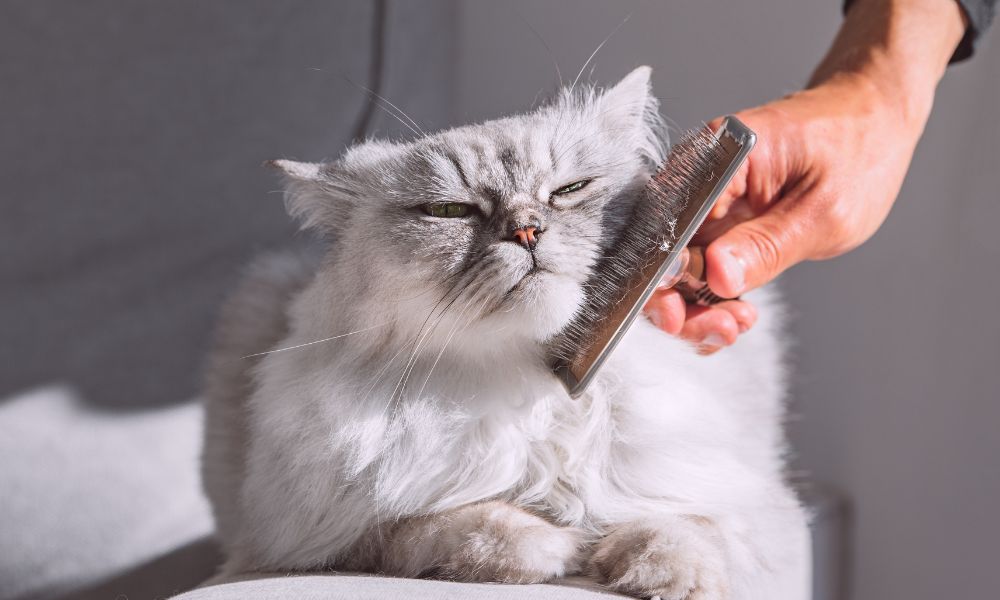
Fact #4.Grooming Needs
Daily Grooming Requirements
Persian cats are synonymous with high maintenance when it comes to grooming, due largely to their luxurious long coats. To keep their fur in top condition and prevent painful matting, daily brushing is a necessity. A wide-toothed comb is typically the tool of choice, as it can gently unravel knots without pulling the skin. Starting from the head and working your way down to the tail, make sure to comb through layers of fur, reaching all the way to the undercoat.
In addition to coat care, Persians require regular eye cleaning to prevent the build-up of crust which is common due to their brachycephalic facial structure. Soft, damp cloths can be used to gently wipe away any discharge. It’s also important to maintain their oral health with regular teeth brushing, and their nails should be trimmed every few weeks to prevent overgrowth and the potential for ingrown nails.
Tips for Maintaining Their Coat and Overall Health
Beyond daily brushing, a Persian cat’s coat benefits from occasional baths, which help to control oil, remove dirt, and keep the fur fluffy. However, baths should not be too frequent, as they can strip the coat of natural oils; every few months is typically sufficient, or as advised by your veterinarian.
When it comes to coat care, a healthy diet plays a pivotal role. Feeding your Persian high-quality cat food with the right balance of omega-3 and omega-6 fatty acids can promote a shiny, healthy coat from the inside out. Regular check-ups with the vet will also ensure that any potential skin issues are caught early and treated promptly.
In terms of overall health, maintaining a clean living environment will minimize the risk of hairballs and other digestive issues. Given their long fur, Persians are particularly prone to ingesting hair, so a hairball control formula in their diet might be beneficial.
Persian cats may also experience tear staining on their face. Choosing a diet that’s low in additives and artificial colorings can help reduce tear staining. Additionally, keeping their face meticulously groomed, with regular wiping to remove tear residue, will help prevent any associated skin irritation.
Lastly, don’t forget the mental grooming—regular playtime and interaction are vital for keeping your Persian cat’s mind stimulated and their emotional health in check. They may not be the most athletic of cats, but they do enjoy interactive toys that pique their curiosity and provide gentle exercise.
Fact #5. The Importance of Diet
Nutritional Needs Specific to Persian Cats
The luxurious coat and distinctive physique of Persian cats are not just maintained by external grooming but are also a reflection of their diet. Persians have unique dietary needs that cater to their specific health requirements. Their long fur, for example, can lead to a greater risk of hairballs, and their shorter digestive tracts may require easily digestible foods to prevent digestive issues.
High-quality cat food that’s rich in protein is crucial for maintaining their muscle tone and supporting their relatively sedentary lifestyle. Animal-based proteins should be the first ingredient in their food to ensure they’re getting the essential amino acids they need. Additionally, a balanced intake of vitamins and minerals supports their immune system and overall health.
Fiber plays a crucial role in a Persian’s diet to aid in digestion and help minimize the formation of hairballs. A specialized indoor formula or a hairball control diet can sometimes be beneficial for this breed.
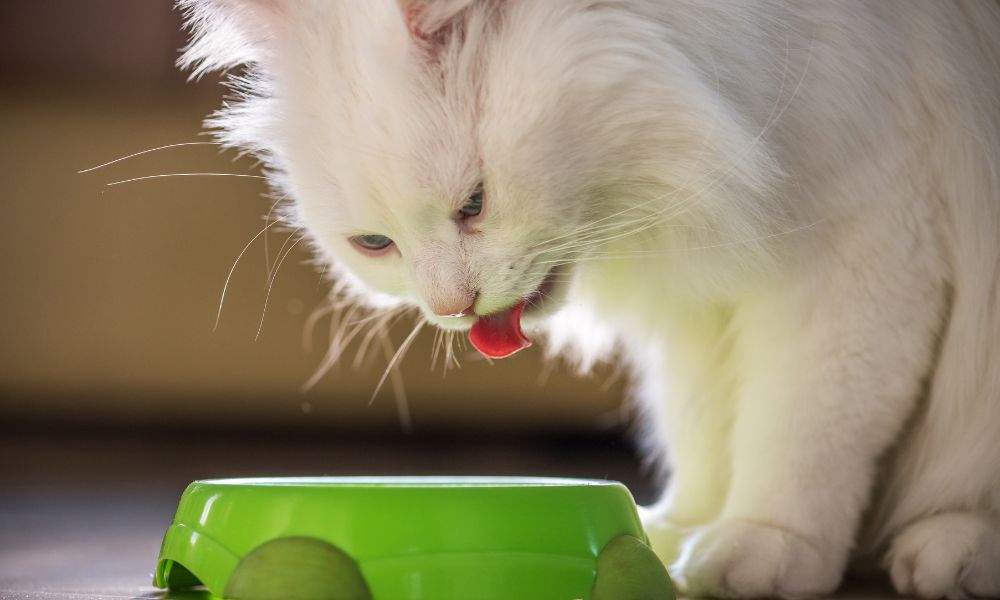
Recommended Diet and Feeding Practices
When it comes to feeding practices, Persians can be more prone to dental problems, so a combination of wet and dry food can be beneficial. Wet food helps ensure they get enough water in their diet, which is particularly important for kidney and urinary tract health, while dry food can help reduce tartar build-up on their teeth.
It’s recommended to feed Persian cats a measured amount of food at regular intervals to prevent obesity, which they can be prone to due to their less active nature. Free-feeding should generally be avoided, as it can be difficult to monitor their intake. Instead, establish a feeding schedule, typically twice a day, and stick to it.
Portion control is also key. Because of their brachycephalic faces, Persians might find it harder to pick up food; using shallow bowls can make mealtime easier and more comfortable for them. It’s also essential to provide fresh water daily to encourage adequate hydration, which is vital for maintaining kidney health and preventing urinary tract diseases.
While Persians aren’t known to be particularly picky eaters, they do appreciate consistency. Sudden changes in their diet can upset their stomachs, so any dietary transitions should be made gradually over the course of several days.
Fact #6. Persian Cats as Family Pets
Compatibility with Children and Other Pets
Persian cats are typically gentle and patient, making them suitable companions for families with children who understand the importance of being gentle with pets.
Their calm demeanor can be a perfect match for the energy of respectful children, and they often enjoy being petted and pampered. However, it’s crucial to teach children how to handle these cats properly, avoiding rough play that can stress the cat or lead to injury.
When it comes to other pets, Persians can live harmoniously with animals that share their laid-back approach to life. They can get along with cat-friendly dogs and other cats, especially if they are introduced properly and gradually. However, their serene nature means they might not mesh well with overly exuberant pets that may invade their personal space or startle them with sudden energy bursts.
Considerations for a Harmonious Home Environment
Creating a peaceful home environment is vital for a Persian cat’s well-being. They thrive in quiet settings and might become stressed by loud noises or chaotic households. Providing a retreat or a private space where your Persian can escape when they feel overwhelmed is a good practice.
Environmental enrichment is also important. Even though they’re not as active as other breeds, Persians still require mental stimulation. Cat trees, scratching posts, and interactive toys can keep them engaged and content.
Regular grooming sessions should be part of the family routine, not only to maintain the Persian’s coat but also to foster bonding. Because Persians are so heavily reliant on their owners for grooming, this can be a special time that strengthens your relationship with them.
Temperature regulation is another consideration. Their thick coats mean Persians can overheat easily, so it’s essential to keep your home at a comfortable temperature, particularly during warmer months.
Lastly, given their somewhat delicate health, easy access to their food, water, and litter box in a clean and quiet area will help prevent any stress-related behavioral issues.
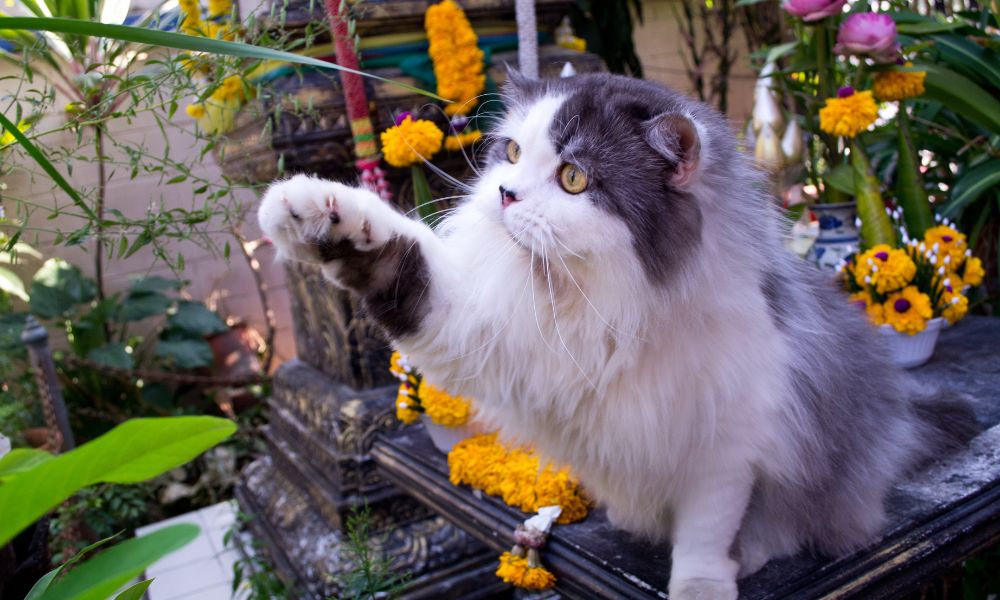
Fact #7. Breeding and the Importance of Ethical Practices
Understanding Responsible Breeding
Responsible breeding of Persian cats is a serious commitment that entails much more than just pairing two cats together. Ethical breeders take the time to understand genetics and strive to improve the breed, prioritizing health, temperament, and adherence to breed standards. They engage in health screenings for common genetic issues like polycystic kidney disease (PKD), heart conditions, and respiratory problems related to their brachycephalic features.
Responsible breeders also ensure that they are breeding cats that are of the right age and condition to handle the pregnancy and rearing of kittens. They provide a clean, nurturing environment for the queen (mother cat) and her litter, ensuring they receive proper veterinary care and nutrition. Moreover, ethical breeders don’t overbreed their queens, allowing ample time between litters for recovery.
A critical aspect of responsible breeding is the commitment to finding suitable, loving homes for kittens. This involves screening potential owners, educating them about the breed’s needs, and often remaining available for advice after the kittens have been placed in their new homes.
Avoiding Common Unethical Practices
Unethical practices in breeding can lead to a host of problems, both for the animals and the unwitting families that take them in. Some common malpractices to avoid include:
- Overbreeding: Pushing a female cat to have too many litters without adequate rest periods is detrimental to her health and the health of the kittens.
- Inbreeding: While some degree of line breeding might be used to maintain certain breed characteristics, too close genetic pairing can amplify genetic disorders and lead to a reduced gene pool with heightened health issues.
- Ignoring Health Issues: Failing to screen for and address genetic health problems perpetuates these conditions and leads to suffering for the animals and heartache for owners.
- Neglecting Socialization: Kittens must be properly socialized to ensure they grow into well-adjusted adults. Without this, cats can become fearful or aggressive.
- Poor Living Conditions: Overcrowding and unhygienic breeding facilities can lead to disease, poor social development, and high stress in cats.
- Lack of Veterinary Care: Regular veterinary oversight is crucial to monitor the health of the breeding cats and their offspring. Skipping this care to save costs is unethical and harmful.
- Misleading Buyers: Ethical breeders are transparent about their breeding practices and the expected traits of their kittens. They do not mislead buyers regarding the cat’s health or pedigree.
Fact #8. Health Considerations
Common Health Issues in Persian Cats
Persian cats, with their distinctive features and plush coats, also have a range of breed-specific health considerations that potential owners should be aware of. Their flat faces, or brachycephalic skulls, can lead to brachycephalic airway syndrome, causing breathing difficulties, dental issues due to crowded teeth, and excessive tearing of the eyes. Regular veterinary check-ups can help to manage these conditions and ensure the cat’s comfort.
Polycystic kidney disease (PKD) is a hereditary condition that is particularly prevalent in Persians. Responsible breeders should screen for this disease, and it’s recommended that prospective owners request proof of PKD testing. Heart conditions, such as hypertrophic cardiomyopathy, have also been noted in the breed and should be monitored with regular veterinary care.
Other concerns include:
- Hairballs: Due to their long fur, Persians are especially susceptible to hairballs, which can sometimes cause gastrointestinal blockages.
- Skin conditions: Their dense coat can hide skin conditions, so regular grooming and health checks are crucial to detect problems early.
- Obesity: A less active lifestyle can lead to weight gain, so diet control and regular play are important.
Lifespan and How to Ensure a Healthy Life
The typical lifespan of a well-cared-for indoor Persian cat ranges from 12 to 17 years. Ensuring a long and healthy life for a Persian involves a combination of genetics, regular veterinary care, and a nurturing home environment.
Preventive care is key. This means keeping up with vaccinations, parasite control, and regular dental check-ups. Nutrition plays a vital role; feeding a balanced diet formulated for indoor cats can help prevent obesity and support overall health.
Mental health is just as important as physical health. Persians, like all cats, benefit from environmental enrichment. This can include climbing structures, hiding spots, and interactive toys that encourage natural behaviors.
Stress reduction is essential due to their calm nature. Keeping their environment consistent and predictable, providing plenty of quiet spaces, and avoiding loud or sudden noises can help keep anxiety at bay.




